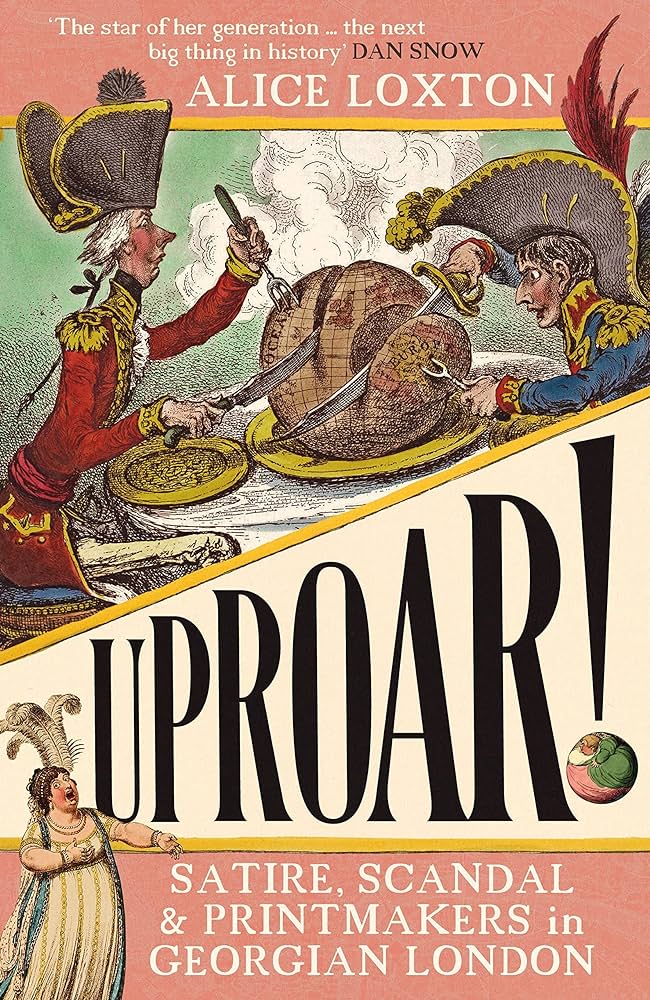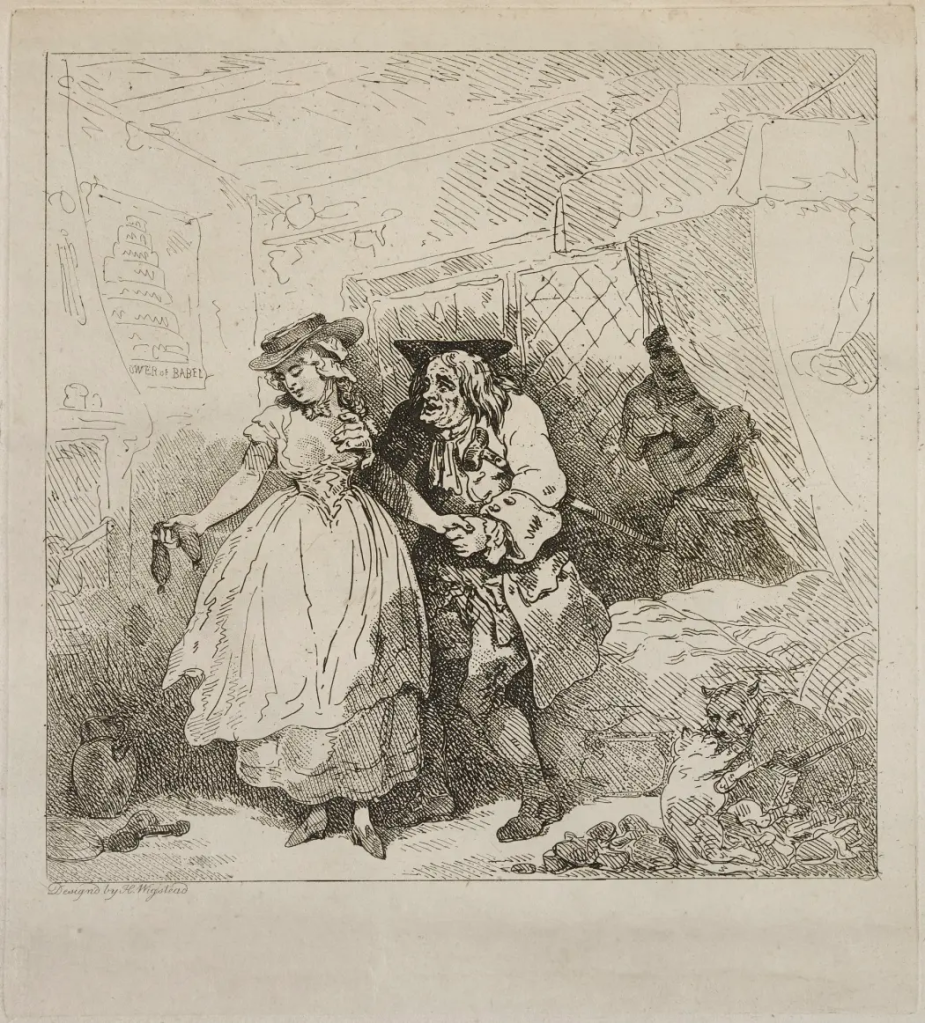
One political figure who was central at the time was Charles James Fox, who was the candidate as Prime Minister in the election of 1784. Charles James Fox (24 January 1749 – 13 September 1806) was a prominent British Whig statesman whose parliamentary career spanned 38 years of the late 18th and early 19th centuries. He was the arch-rival of the Tory politician William Pitt the Younger. He was the object of many caricaturists like Rowlandson.

The American War of Independence ended with the Treaty of Paris in 1783. The Treaty of Paris, signed in Paris by representatives of King George III of Great Britain and representatives of the United States on September 3, 1783, officially ended the American Revolutionary War and state of conflict between the two countries and acknowledged the Thirteen Colonies, which had been part of colonial British America, as an independent and sovereign nation.

Back then Lord North was the Prime Minister, but he was eventually dismissed when he and Fox made an alliance. Frederick North (13 April 1732 – 5 August 1792), better known by his courtesy title Lord North was Prime Minister of Great Britain from 1770 to 1782. In December 1783, George III engineered the dismissal of the Fox–North coalition, which he hated, and appointed William Pitt the Younger as Prime Minister. North was the second British Prime Minister to be forced out of office by a motion of no confidence.

In 1784 Fox ran for Prime Minister, but he lost the election. The 1784 British general election resulted in William Pitt the Younger securing an overall majority of about 120 in the House of Commons of Great Britain, having previously had to survive in a House which was dominated by his opponents.

Georgiana, Duchess of Devonshire, canvassed for Fox, which created great controversy. Fox and Pitt campaigned bitterly, allegedly libelled and slandered their opponents relentlessly and resorted to all kinds of tactics, including Georgiana, Duchess of Devonshire, touring the streets and, according to the opposition, kissing many voters to induce them to vote for Fox. Even George, Prince of Wales, campaigned for Fox.

William Pitt the Younger (28 May 1759 – 23 January 1806) was a British statesman, the youngest and last prime minister of Great Britain from 1783 until the Acts of Union 1800 and then first prime minister of the United Kingdom from January 1801.

Another satirist at the time was Isaac Cruikshank (bapt. 14 October 1764 – 1811).

The country suffered a crisis when George III got sick. In 1765 the king suffered from a combination of upper respiratory illness that triggered a depressive episode.

During this time there was much debate about whether the king’s son should be the regent. He used caricaturists to support his cause. One of the artists was Henry Wigstead, who decorated the Brighton Pavillion. Henry Wigstead (died 1800) was an English Magistrate, publisher, businessman, amateur painter & caricaturist. He was a patron and close personal friend of Thomas Rowlandson, whom he accompanied on sketching trips to the Isle of Wight (1784), Brighton (1789) and Wales (1787) which resulted in subsequent publications for which Rowlandson provided the illustrations.

In 1789 Pitt introduced the Regency Bill, which Prince George didn’t approve of. In January 1789, the Regency Bill was passed by the Commons and clearly was intended to deprive the Prince of Wales of power.

Two other publishers, other than Humphrey, are included in the book: Samuel Fores and William Holland.
Samuel William Fores, often credited as S. W. Fores (1761 – 3 February 1838) was an English illustrator and publisher/printer based in Piccadilly, London.

William Holland (1757 to 1834 in London) was a leading London print seller and radical publisher who was fined £100 and imprisoned in 1793 for a year for seditious libel.

